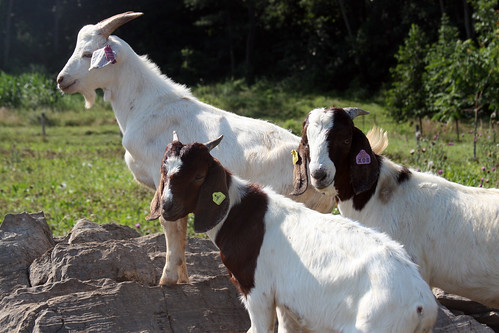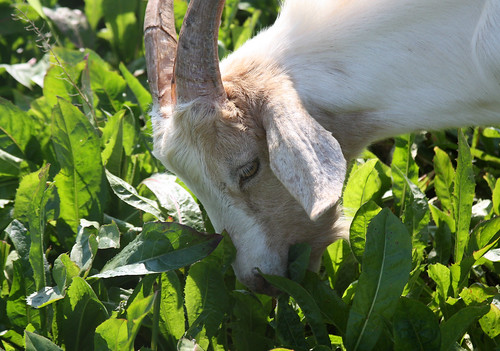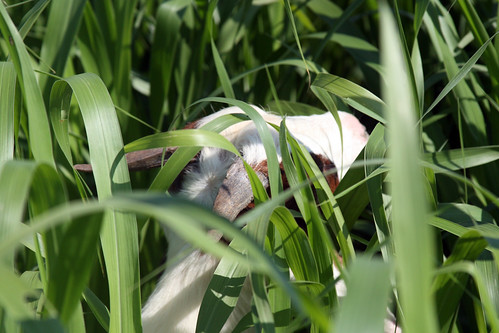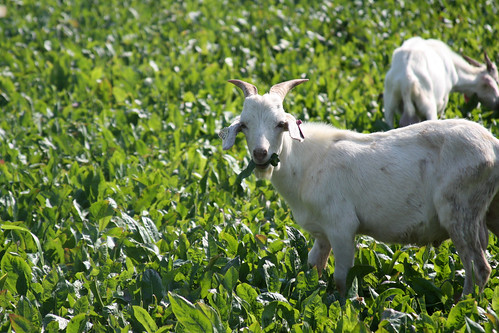There's no point in comparing the initial fecal egg counts since the goats originate from different geographic areas and it is not known which goats had been dewormed and which faced more severe parasite challenges. However, the information should be of interest to individual consigners who know the management and genetics of their goats.
 On June 7, the goats were dewormed with both moxidectin and levamisole. The purpose of the double deworming was to make sure the goats started the test equally with regards to parasite infection.
On June 7, the goats were dewormed with both moxidectin and levamisole. The purpose of the double deworming was to make sure the goats started the test equally with regards to parasite infection.
The June 20 fecal egg counts ranged from 0 to 1,000 epg. Only one goat had a fecal egg count above 500 epg. The average FEC was 51 epg, a reduction of more than 95 percent. This was to be expected as the goats were dewormed with anthelmintics from two different chemical classes. Furthermore, worms have developed less resistance to moxidectin and levamisole than the other anthelmintics.
From June 7 until June 20, FAMACHA© (eye anemia) scores improved from an average of 2.24 to an average of 1.65. The fecal samples collected on July 3rd are still being analyzed. They are expected to be higher as the goats have been ingesting infective worm larvae. The pooled fecal samples collected on June 7 and June 20 have been analyzed by the University of Georgia College of Veterinary Medicine (Dr. Ray Kaplan's lab). The June 7 sample contained 2,300 eggs per gram. 67 percent of the worm larvae was Haemonchus contortus (the barber pole worm); 32 percent, Trichostrongylus (bankrupt worm); and 1%, Oesophagostomum (nodule worm).
The pooled fecal samples collected on June 7 and June 20 have been analyzed by the University of Georgia College of Veterinary Medicine (Dr. Ray Kaplan's lab). The June 7 sample contained 2,300 eggs per gram. 67 percent of the worm larvae was Haemonchus contortus (the barber pole worm); 32 percent, Trichostrongylus (bankrupt worm); and 1%, Oesophagostomum (nodule worm).
The June 20 sample had only 100 eggs per gram, a reduction of more than 95 percent. 91% of the larvae was Haemonchus contortus and 9 percent was Trichostrongylus. The sample from July 3 had a fecal egg count of 300 epg. The larvae is currently being hatched for ID.
It takes several weeks for the worm eggs to hatch into larvae. The only way to identify the different type of gastro-instestinal (GI) worms that are infecting the goats is to have the eggs hatch out. The type of parasite is determined by identifying the larvae. Forage conditions are excellent. The goats are currently grazing fields of chicory and pearl millet. The grass pastures that were harvested for hay are recovering nicely. On Sunday night, the research center received 1.8 inches of rainfall. The weather is pleasant. Temperatures are in the 80's and low 90's. It is not unbearable hot or humid.
Forage conditions are excellent. The goats are currently grazing fields of chicory and pearl millet. The grass pastures that were harvested for hay are recovering nicely. On Sunday night, the research center received 1.8 inches of rainfall. The weather is pleasant. Temperatures are in the 80's and low 90's. It is not unbearable hot or humid.
However, the conditions are ripe for parasites. There is adequate moisture and humidity to promote their development. Goats that hang around the huts and graze in the central laneway are most vulnerable. Those that graze the pearl millet are not at high risk, due to the tall height of the forage. The chicory also has some height to it. Eighty percent of infective worm larvae is usually found in the first two inches of forage growth. On Friday, we expect to see poorer FAMACHA© scores and deworm some goats. Hopefully, the goats will start to put on some meaningful gain. They have lots of green forage to munch on.
On Friday, we expect to see poorer FAMACHA© scores and deworm some goats. Hopefully, the goats will start to put on some meaningful gain. They have lots of green forage to munch on.
Download fecal data from June 7 and June 20











